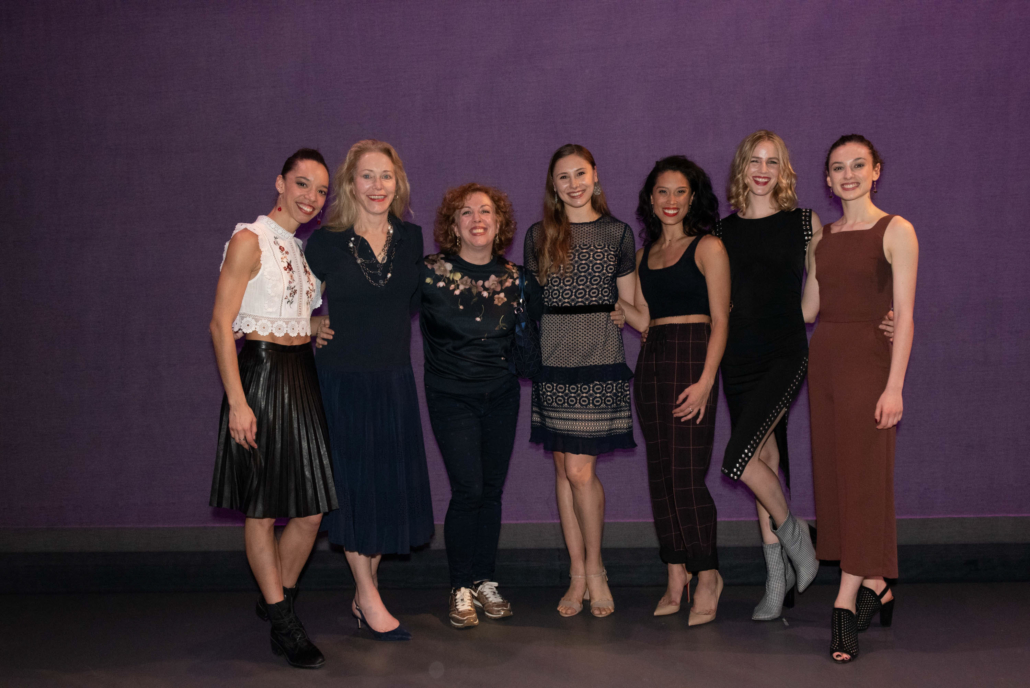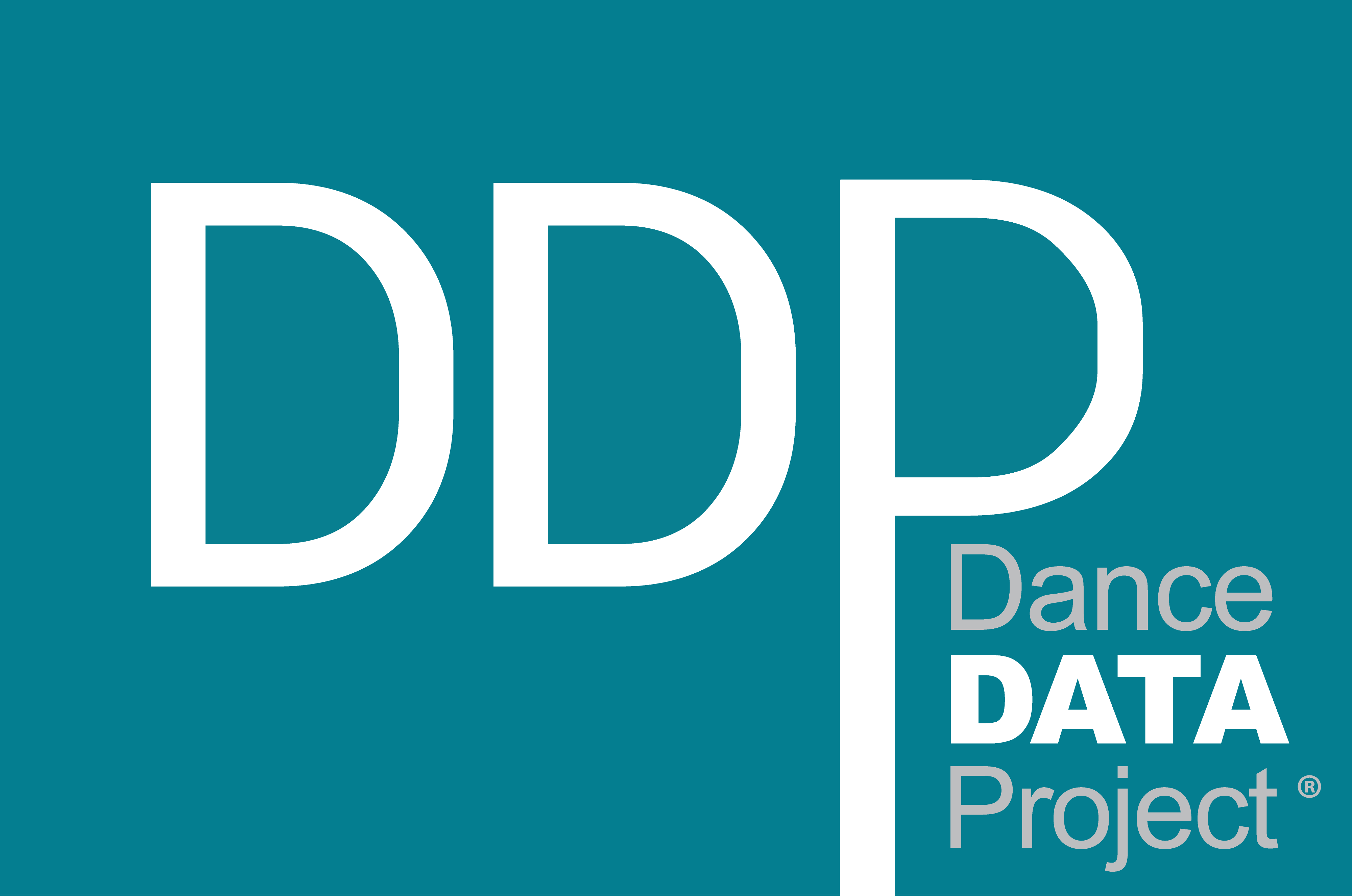DDP Talks To
"The Devil Ties My Tongue" by Amy Seiwert performed for the SKETCH Series, 2013. Photo by David DeSilva. Courtesy of Amy Seiwert's Imagery
December 31st: Jacob's Pillow: Ann & Weston Hicks Choreography Fellows Program, December 31st: New England Presenter Travel Fund, December 31st: Central Pennsylvania Youth Ballet Scholarship, December 31st: 24 Seven Dance Convention, December 31st: National Theater Project Presenter Travel Grant, December 31st: Breck Creek Artist-in-Residence Program, December 31st: Indigo Arts Alliance Mentorship Residency Program, March 31st: SIA Foundation Grants
×
"The Devil Ties My Tongue" by Amy Seiwert performed for the SKETCH Series, 2013. Photo by David DeSilva. Courtesy of Amy Seiwert's Imagery
By Jennifer Mulson
30 October 2019
It’s not only the fields of media and politics coming to terms with their century-long misogyny; it’s also the world of dance.
When you take in a Ballet Hispánico show, you’re watching one company’s effort to bring equality to the dance world. Over the past three years, the Manhattan-based Latino dance organization has made efforts to feature female choreographers and increase the women’s visibility.
“The #MeToo movement is also affecting us,” said Eduardo Vilaro, artistic director and CEO of Ballet Hispánico. “Everyone thinks the arts don’t face it, but they do too. The dance world has been a male-dominated world, with women playing the swan or themselves as marginalized. This is a way of really moving the needle.”
Read the full article in The Gazette.
By Laura Dorwart
10 March 2019
Despite decades-long efforts from female journalists, broadcasters, writers, editors, and other media professionals, a gap persists in the representation and employment of women across all forms of media. The imbalance is even starker for female media professionals who are otherwise marginalized, like women of color, women with disabilities, and women who identify as part of the LGBTQ community.
The Women’s Media Center, a feminist organization that aims to close the gender and racial gaps in media with pointed research and training, recently released its annual flagship report on women’s media representation, including both the inequalities that haven’t been addressed and the progress that’s been made over the past year.
The 2019 report, “The Status of Women in the U.S. Media 2019,” aggregates and analyzes the results of over 94 studies about the current status of women in media. The report identified a number of persistent inequalities in media representation across print and online media, radio and television, film, gaming, and engineering. The report includes original Women’s Media Center research, as well as academic and industry surveys and reports from organizations like newsrooms, media nonprofits, and labor unions.
Read the full article on Philanthropy Women.
Ballet superstar Karen Kain will retire as artistic director of The National Ballet of Canada in January 2021.
The ballet’s board of directors says Kain will step down from the post but remain with the company as artistic director emeritus.
The announcement comes nearly 15 years after Kain assumed the creative reins in 2005 and 50 years after joining the company as a dancer in 1969.
She says serving as artistic director “has been the greatest honour” of her life.
The ballet’s board chair, Cornell Wright, lauded Kain for inspiring “excellence in all who have the privilege to work with her.”
Kain commissioned and acquired 65 works for the company, and is directing and staging a new “Swan Lake” in June 2020.
“I am so proud of the National Ballet of Canada and feel so fortunate to have had this wonderful company as my artistic home for 50 years. The role of artistic director is the most challenging, and the most rewarding, of my career,” Kain said Friday in a release.
Read the full article in The Star.
By Laura Cappelle
23 October 2019
It’s 9 a.m. at the Palais Garnier, the imposing home of the Paris Opera Ballet, and Crystal Pite is listening to Chopin alone in her dressing room. The Canadian choreographer has 10 days to go before the world premiere of Body and Soul, her new production for the French company, and it’s not finished, she tells me when I join her. “I was listening to some of the 24 preludes that I haven’t even touched yet. So … that’s challenging.”
Read the full article with a subscription to The Globe and Mail.
By Lauren Wingenroth
24 October 2019
Just last year, the previously Rockville, Maryland-based American Dance Institute—now called the Lumberyard Center for Film and Performing Arts—moved to a 30,000-square foot-former lumberyard in Catskill, New York, spending 5 million dollars to renovate the building.
Now, the organization needs to raise 1 million dollars by the end of 2019, or risk having to shut down their pre-premiere technical rehearsal program.
What happened between last May, when the much-talked-about facility opened its doors, and today, when Lumberyard’s signature program faces potential closure?
The costs of opening the facility were just part of the problem, says Lumberyard’s executive and artistic director Adrienne Willis. It cost more to get the building operating than they expected, and some support they were counting on didn’t come through.
But Willis says the problem Lumberyard is facing is a more systemic one, that speaks to how the creation process has changed in recent years—but funding models haven’t kept up.
Since 2011, Lumberyard has been providing artists with space to hold extended technical rehearsals before a work’s premiere. (Part of the reason for their move was proximity to New York City, where most of these works end up premiering.) Lumberyard is the only facility of its kind in the United States, giving artists one or two weeks in the space with housing, a full crew and a public work-in-progress showing.
Learn more in Dance Magazine.
Annabelle Lopez Ochoa’s Vendetta, A Mafia Story will see its American premiere in Tulsa next March. The synopsis is dramatic and includes a boss woman:
Chicago, 1950’s. Rosalia Carbone’s wedding day is marred by a violent murder, beginning a long standing grudge between infamous rival mob families. When the Godfather, the feared patriarch of the family, is killed in a shootout, an enraged Rosalia takes his place.
Full of red hot emotions like passion, anger and greed and depicted through the beauty of dance, Vendetta is a thrilling show where Broadway meets film noir. Add in a touch of Moulin Rouge and a hint of Vaudeville, plus a lot of humor, and bada-bing! You’re guaranteed a captivating performance.
Tulsa Ballet artistic director Marcello Angelini is also taking steps to feature female costume and lighting designers in the upcoming season, with Julie Duro lighting the company’s Nutcracker. Female choreographers, are also given attention, with Penny Saunders joining the roster via a world premiere coming to the company soon.
Learn more about the company’s season and Vendetta here.
Watch past works below:
It was a delight and privilege for DDP founder & president Liza Yntema to attend a preview of Boston Ballet’s BB@home: Choreographer showing on Wednesday.
The performance on Thursday is sold out, and will present new works by Principal Dancer Lia Cirio, Soloist Chyrstyn Fentroy, Second Soloist Lauren Herfindahl, and Artists Sage Humphries, Abigail Merlis, and Joy Womack.
Following the preview showing, Liza was able to meet the artists and take a quick picture before her travels south to Washington, D.C. for The Washington Ballet’s NEXTsteps performance on Thursday.

August 2019
Data on the gender split among professional orchestra performers offers a more complex view of the situation. At first glance, the numbers are encouraging: In 2018, 48 percent of players in orchestras represented by the League of American Orchestras were women, a vast improvement from orchestras of the past. However, positions for brass, percussion and some wind instruments – not to mention principal positions – are disproportionately occupied by men.
But we can also look to those numbers for encouragement: They show us that gender parity can at least be improved. One reason for the increase of women in orchestras since the 1970s has been the implementation of blind auditions. Another? Increased social acceptance and visibility of women in roles from which they have been historically excluded.
Making classical music a more equitable place demands a cultural change – and cultural changes don’t happen without conversation and action. Just in the past five or so years, there has been an explosion in initiatives working to address the gender disparity in classical music. Here are some of our favorites.
Read the full article on DePauw POP Picks.
By Kerry Hannon
23 October 2019
WASHINGTON — Her somber gaze is direct, and in her lap, she firmly holds a book.
The circa 1855 daguerreotype portrait of Lucy Stone, the suffragist and abolitionist, is powerful in its simplicity. Not surprisingly, Ms. Stone’s mission was incited by the inequality in a society that discouraged women from becoming educated.
The image is part of “Women of Progress: Early Camera Portraits,” an exhibition at the National Portrait Gallery, one of several major exhibitions in the nation’s capital that celebrate women — from the battle for voting rights, spurred by the 100th anniversary of the 19th Amendment, to artworks by feminist icons who embody the challenging issues of their epochs.
“Considering the longstanding imbalance in museum prerogatives, a convergence of exhibitions addressing women — as artists, as activists, as historical figures — is notable,” said Susan Fisher Sterling, the director of the National Museum of Women in the Arts.
Read the full article in The New York Times.
By Debra Craine
23 October 2019
There are many ways for a ballerina to retire. Sylvie Guillem packed in her illustrious career with enormous grace at the age of 50 and disappeared from the public eye; Alessandra Ferri retired and then changed her mind, pursuing a new career as a performer in her fifties; Darcey Bussell left Covent Garden in her thirties only to find even greater fame as a judge on Strictly Come Dancing in her forties. Viviana Durante chose the hardest route — starting a company.
Read the full feature in The Times.
Reach out to us to learn more about our mission.
"The Devil Ties My Tongue" by Amy Seiwert performed for the SKETCH Series, 2013. Photo by David DeSilva. Courtesy of Amy Seiwert's Imagery
